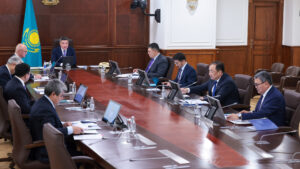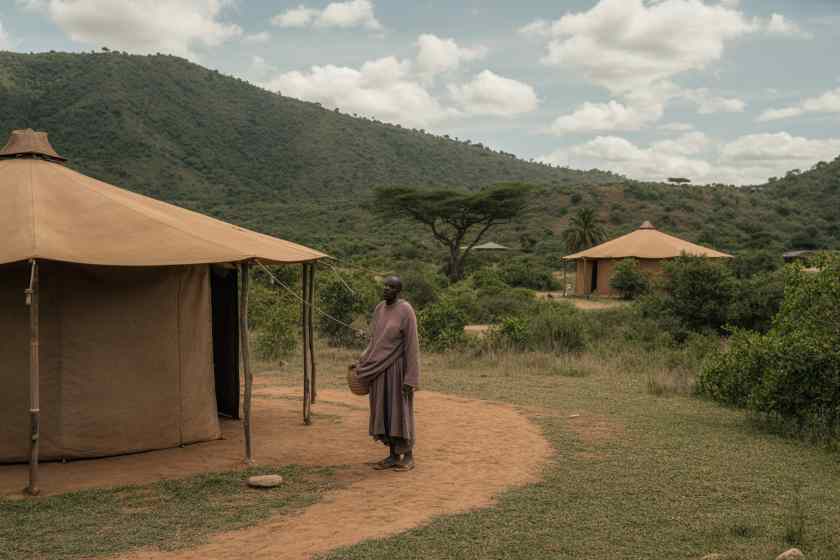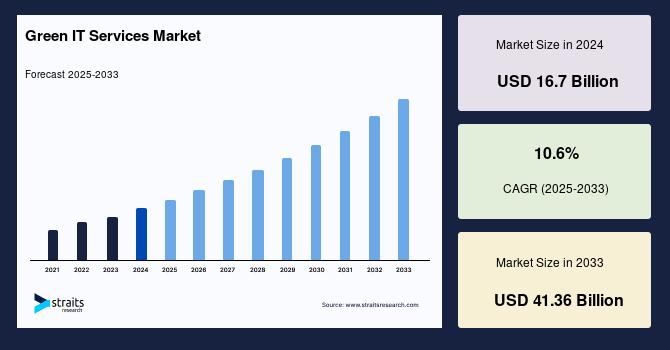Potential impact on Bangladesh – New Age BD

Report on the Transboundary Implications of China’s Yarlung Zangbo Hydropower Project
Executive Summary
The construction of a 60,000 MW hydropower project by China on the Yarlung Zangbo River presents a significant challenge to the achievement of multiple Sustainable Development Goals (SDGs) in downstream nations India and Bangladesh. While the project aligns with China’s national objectives for SDG 7 (Affordable and Clean Energy) and SDG 13 (Climate Action), its unilateral implementation, lack of transparency, and potential environmental impacts directly threaten progress on SDG 6 (Clean Water and Sanitation), SDG 2 (Zero Hunger), SDG 15 (Life on Land), and SDG 16 (Peace, Justice and Strong Institutions) for the lower riparian states. This report analyzes the project’s conflict with the SDG framework and outlines a recommended course of action for Bangladesh grounded in international cooperation and sustainable development principles.
Project Overview and Conflicting Development Goals
China’s Pursuit of SDG 7 and National Development
China has initiated the construction of the world’s largest hydropower dam complex on the Yarlung Zangbo river in Tibet. The project, scheduled for completion in 2033 at a cost of $167 billion, is a cornerstone of the ‘West-to-East Electricity Transfer Project.’ Its primary objectives are to:
- Generate 60,000 MW of renewable electricity, contributing significantly to China’s goals under SDG 7 (Affordable and Clean Energy).
- Advance the national strategy for carbon neutrality, aligning with SDG 13 (Climate Action).
- Promote economic development in Tibet, relating to SDG 8 (Decent Work and Economic Growth).
Despite claims of thorough engineering studies, detailed feasibility reports and Environmental Impact Assessments (EIAs) have not been made public, creating significant concern for downstream stakeholders.
Governance Deficits and Implications for SDG 16
The project’s implementation highlights critical gaps in regional governance and international cooperation, undermining SDG 16 (Peace, Justice and Strong Institutions).
- Lack of Transparency: The failure to disclose comprehensive EIAs and technical data for a major transboundary project contravenes the principles of transparency and accountability essential for strong institutions (Target 16.6).
- Weak Legal Frameworks: The unilateral action is proceeding in a context where China, India, and Bangladesh have not ratified the 1997 UN Convention on the Law of the Non-navigational Uses of International Watercourses. This absence of a shared legal mechanism impedes progress on SDG 6, Target 6.5, which calls for implementing integrated water resources management through transboundary cooperation.
Downstream Impacts on Sustainable Development in India and Bangladesh
Threats to Water, Food, and Livelihood Security (SDG 6, SDG 2, SDG 1)
The dam poses a direct threat to fundamental human needs and economic stability in downstream regions.
- Water Scarcity and Disruption (SDG 6): Bangladesh depends on the Brahmaputra for approximately 70% of its lean season water flow. Any alteration or reduction threatens water access for millions, jeopardizing agriculture, navigation, and domestic use. The potential for deliberate or accidental water releases creates risks of artificial droughts or catastrophic floods, further undermining water security.
- Food Insecurity (SDG 2): Disruption to water flow will have a devastating impact on irrigation-dependent agriculture, threatening regional food supplies and progress towards Zero Hunger.
- Poverty and Economic Loss (SDG 1): The potential collapse of local fisheries and degradation of agricultural land threatens the livelihoods of millions, potentially reversing gains in poverty reduction.
Ecological Degradation and Biodiversity Loss (SDG 15, SDG 14)
The project is expected to cause severe and irreversible environmental damage, directly impacting life on land and below water.
- Sediment Trapping: Large dams trap nutrient-rich sediments. This leads to riverbed degradation, loss of soil fertility in floodplains, and increased coastal erosion in Bangladesh. The natural land-building process of the delta, crucial for stability, will be interrupted.
- Impact on Ecosystems (SDG 15): The alteration of the river’s natural flow regime will disrupt fragile riverine ecosystems. Increased riverbank erosion has already been observed along major rivers in Bangladesh.
- Biodiversity Loss (SDG 14): The dam will obstruct the migratory paths of critical fish species like hilsa and mahseer, leading to the collapse of regional fisheries and significant biodiversity loss.
Undermining Climate Resilience and Adaptation (SDG 13)
While the dam is framed as a climate solution by China, it severely compromises Bangladesh’s ability to adapt to climate change impacts.
- Reduced Delta-Building: The trapping of over a billion tons of sediment annually will halt the natural process that builds up the Bengal delta. This process is essential to counteract land subsidence and rising sea levels, making Bangladesh more vulnerable to climate change. This directly undermines efforts related to SDG 13, Target 13.1 (Strengthen resilience and adaptive capacity to climate-related hazards).
- Seismic Risks (SDG 11): The dam is located in a highly active seismic zone. A major earthquake could trigger a catastrophic dam failure, posing an existential threat to downstream human settlements and contradicting the goal of creating safe and resilient communities.
Recommendations for a Sustainable and Cooperative Path Forward
To address these multifaceted challenges, a response grounded in the principles of the Sustainable Development Goals is required. The government of Bangladesh is advised to pursue the following actions:
- Demand Transparency for Accountability (SDG 16): Formally reiterate and expand requests to China for the public release of all technical documents, including the Environmental Impact Assessment, Feasibility Study, and disaster risk assessments.
- Foster Transboundary Partnerships (SDG 17, SDG 6): Actively pursue tripartite dialogue with India and China for joint risk assessment. Propose and advocate for a basin-wide river management initiative that includes all riparian states to ensure equitable resource management.
- Strengthen Legal Frameworks (SDG 16): Expedite the ratification of the 1997 UN Watercourses Convention to leverage international legal norms for equitable and reasonable use, strengthening Bangladesh’s position as the lowest riparian state.
- Utilise International Justice Mechanisms (SDG 16): Explore options for legal arbitration or reference to international dispute resolution bodies if transparent data and mitigation assurances are not provided.
- Promote Evidence-Based Policy (SDG 9): Commission an independent, comprehensive study involving international and local experts to model the project’s full range of impacts on Bangladesh.
- Engage Civil Society (SDG 17): Build strategic alliances with regional and international non-governmental organizations that advocate for equitable transboundary water management.
- Enhance National Resilience (SDG 6, SDG 13): Accelerate domestic measures to improve irrigation efficiency, diversify water sources, and bolster the resilience of riverine ecosystems to anticipated changes in the Brahmaputra’s flow.
- Conduct Strategic Public Diplomacy: Proactively brief international media, water experts, and civil society on the risks to the SDGs in Bangladesh, building global consensus for a just resolution.
- Adopt Integrated Water Management (SDG 6): Promote and implement a holistic, ecological approach to the management of all domestic water resources to build systemic resilience.
Analysis of Sustainable Development Goals in the Article
1. Which SDGs are addressed or connected to the issues highlighted in the article?
-
SDG 6: Clean Water and Sanitation
- The entire article revolves around the management of a transboundary river (Yarlung Zangbo-Brahmaputra), the unilateral actions of an upstream country (China), and the subsequent impacts on water availability, quality, and flow for downstream countries (India and Bangladesh). It directly addresses issues of water resource management and transboundary water cooperation.
-
SDG 7: Affordable and Clean Energy
- The project at the center of the article is the construction of the “world’s largest hydropower dam,” a source of renewable energy. The article states the project’s goal is to generate 60,000 MW of electricity and aligns with China’s ambition for “carbon neutrality.”
-
SDG 13: Climate Action
- The article connects the dam’s impact to climate change resilience. It notes that the reduction in sediment flow hinders the delta-building process in Bangladesh, which is necessary “to offset rising sea level caused by climate change.” It also mentions the dam’s location in a seismically active region, highlighting risks related to climate-related hazards and natural disasters.
-
SDG 14: Life Below Water
- The article discusses the severe ecological consequences for aquatic life, including the “collapse of local fisheries” and the “decline in migratory species like hilsa and mahseer.” It also mentions the “intrusion of saline water in coastal regions,” which affects coastal and marine ecosystems.
-
SDG 15: Life on Land
- The article details the dam’s impact on terrestrial and freshwater ecosystems. It points to “riverbed degradation, loss of soil fertility,” and increased “riverbank erosion.” The trapping of sediments is shown to interrupt the “natural land-building process needed to stabilise riverbanks and the delta in Bangladesh.”
-
SDG 16: Peace, Justice and Strong Institutions
- The issue of transparency and international law is a central theme. The article highlights the “absence of published full feasibility reports or environmental impact assessments” and mentions the UN Convention on Non-navigational Uses of International Water Courses (1997) as a legal framework that is not being utilized. It calls for accountable institutions and dispute resolution mechanisms.
-
SDG 17: Partnerships for the Goals
- The article explicitly calls for partnerships to address the transboundary issue. The author recommends that Bangladesh “form a partnership with India” and pursue “tripartite engagement — including India, the midstream country.” It also suggests building alliances with NGOs and proposing basin-wide management initiatives involving all stakeholder nations.
2. What specific targets under those SDGs can be identified based on the article’s content?
-
Target 6.5: Implement integrated water resources management at all levels, including through transboundary cooperation as appropriate.
- The article’s core argument is about the failure of transboundary cooperation. It notes that China is acting unilaterally and that co-riparian nations have not adopted the UN Convention (1997) as a dispute mechanism. The author’s recommendation to “propose or join a basin-wide river management initiatives including China, India, Bangladesh, Bhutan, and possibly Nepal” is a direct call to achieve this target.
-
Target 7.2: Increase substantially the share of renewable energy in the global energy mix.
- The project is described as a hydropower dam capable of “generating 60,000 MW electricity,” which is a massive increase in renewable energy capacity. The article states this is part of China’s ambition for “carbon neutrality,” directly aligning with this target’s goal.
-
Target 14.4: Effectively regulate harvesting and end overfishing, illegal, unreported and unregulated fishing and destructive fishing practices…
- The article warns that the dam’s impact, such as trapping sediments and altering water flow, will lead to the “collapse of local fisheries” and a “decline in migratory species like hilsa.” This directly threatens the sustainability of fish stocks, which is the focus of this target.
-
Target 15.1: Ensure the conservation, restoration and sustainable use of terrestrial and inland freshwater ecosystems and their services…
- The article details numerous threats to freshwater ecosystems, including “disruption in ecology and environment,” “riverbed degradation,” and changes to the “natural flow regime.” The reduction in sediment flow is shown to degrade the river and delta ecosystems, impacting their services like soil fertility.
-
Target 16.6: Develop effective, accountable and transparent institutions at all levels.
- This target is relevant due to the repeated criticism of China’s lack of transparency. The article states that “the absence of published full feasibility reports or environmental impact assessments remains a concern” and that for such projects, “assessment documents are seldom disclosed.”
-
Target 17.16: Enhance the global partnership for sustainable development, complemented by multi-stakeholder partnerships…
- The article’s recommendations are a blueprint for achieving this target. It calls for “tripartite engagement,” a “basin-wide river management initiative,” and “alliances with regional and transnational NGOs” to address the challenge collaboratively.
3. Are there any indicators mentioned or implied in the article that can be used to measure progress towards the identified targets?
-
Indicator for Target 6.5 (Transboundary Cooperation):
- The article implies a clear negative indicator. It states that “none of these co-riparian nations have adopted the UN Convention (1997) as a mechanism to settle dispute” and that existing bilateral treaties are “non-functional.” Progress would be measured by the establishment of the “tripartite engagement” or “basin-wide river management initiatives” that the author recommends.
-
Indicator for Target 7.2 (Renewable Energy Share):
- A direct quantitative indicator is provided: the dam’s capacity to generate “60,000 MW electricity.” This figure serves as a measure of the project’s contribution to increasing the supply of renewable energy.
-
Indicator for Target 15.1 (Freshwater Ecosystem Health):
- The article provides a specific, measurable indicator of ecosystem degradation: the volume of sediment flow. It states that sediment carried by trans-boundary rivers to Bangladesh “has declined to about 1 billion tons in recent decades” from a historical level of “over 2 billion tons.” This reduction is a key metric for the health of the river and delta system.
-
Indicator for Target 16.6 (Transparency):
- A clear indicator of the lack of transparency is the “absence of published full feasibility reports or environmental impact assessments.” The public release of these documents, as requested by the author, would be a direct measure of progress towards institutional accountability and transparency.
-
Indicator for Impact on Livelihoods (related to SDG 14):
- The article implies an indicator related to the health of fisheries. The mention of a “collapse of local fisheries” and a “decline in migratory species like hilsa” suggests that fish catch data and population counts of key species could be used as indicators to measure the dam’s negative impact on regional livelihoods.
4. Table of SDGs, Targets, and Indicators
| SDGs | Targets | Indicators Identified in Article |
|---|---|---|
| SDG 6: Clean Water and Sanitation | 6.5: Implement integrated water resources management, including through transboundary cooperation. | The absence of a functional tripartite or basin-wide water-sharing agreement or treaty among China, India, and Bangladesh. |
| SDG 7: Affordable and Clean Energy | 7.2: Increase substantially the share of renewable energy. | The generation of 60,000 MW of electricity from the hydropower project. |
| SDG 14: Life Below Water | 14.4: Effectively regulate harvesting and end overfishing… | The “collapse of local fisheries” and “decline in migratory species like hilsa,” implying a negative impact on fish stock sustainability. |
| SDG 15: Life on Land | 15.1: Ensure the conservation… of inland freshwater ecosystems. | The reduction of annual sediment flow to Bangladesh from over 2 billion tons to 1 billion tons, indicating degradation of the river and delta ecosystem. |
| SDG 16: Peace, Justice and Strong Institutions | 16.6: Develop effective, accountable and transparent institutions. | The non-disclosure and “absence of published full feasibility reports or environmental impact assessments” for the dam project. |
| SDG 17: Partnerships for the Goals | 17.16: Enhance the global partnership… complemented by multi-stakeholder partnerships. | The lack of a “tripartite engagement” or “basin-wide river management initiative” involving all stakeholder countries and NGOs. |
Source: newagebd.net

What is Your Reaction?
 Like
0
Like
0
 Dislike
0
Dislike
0
 Love
0
Love
0
 Funny
0
Funny
0
 Angry
0
Angry
0
 Sad
0
Sad
0
 Wow
0
Wow
0



























;Resize=805#)



















































